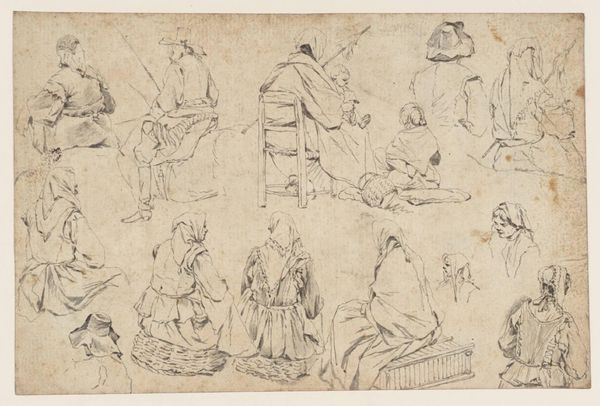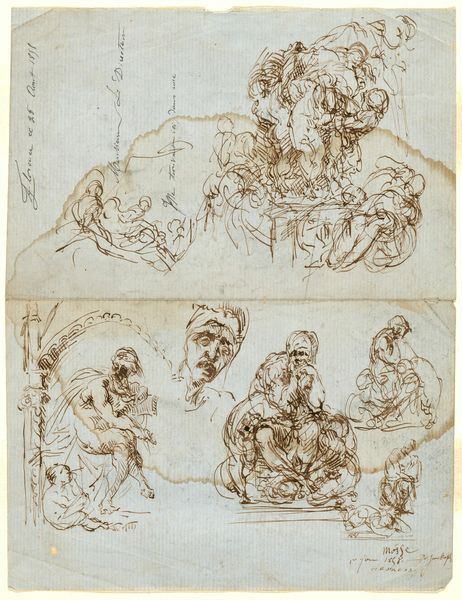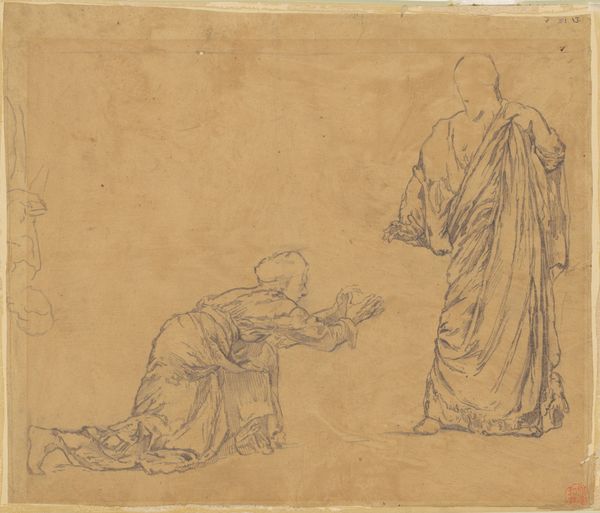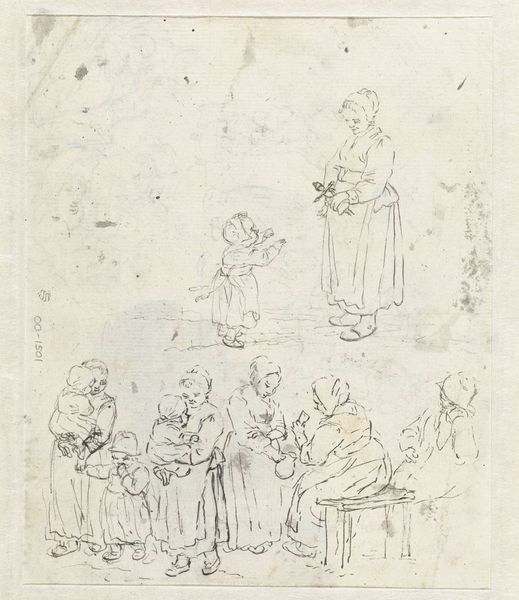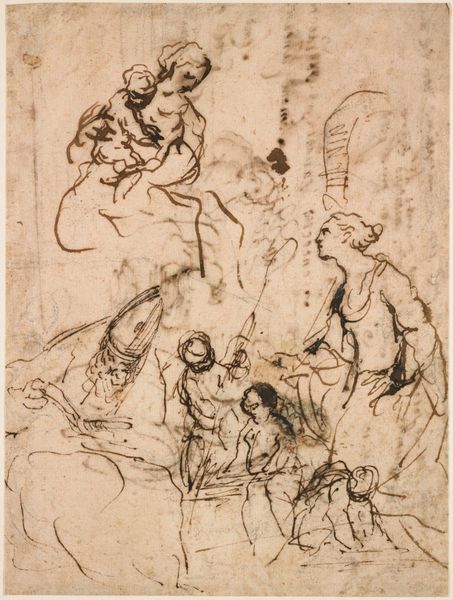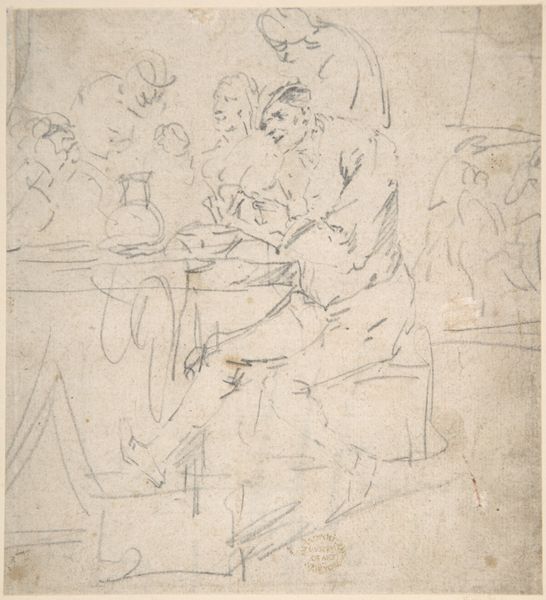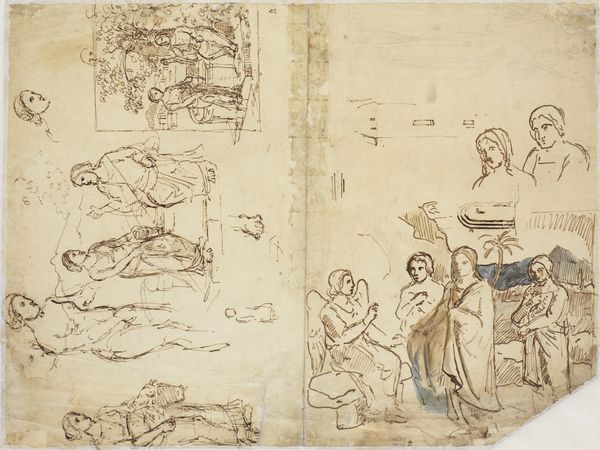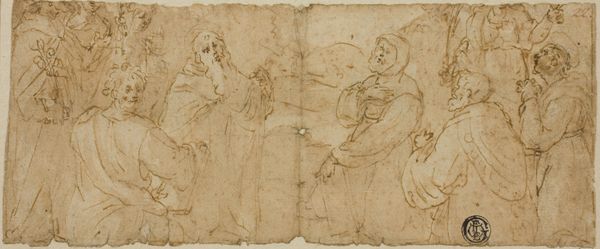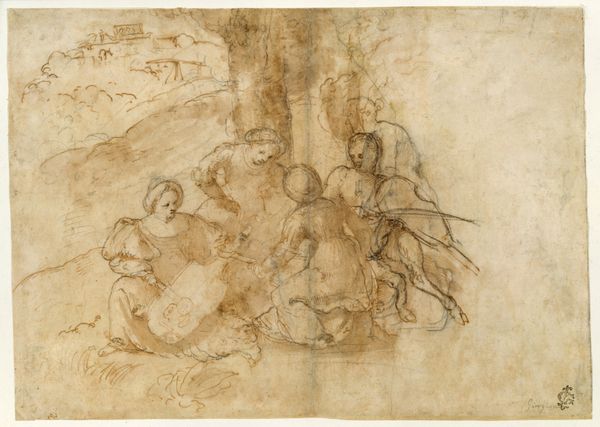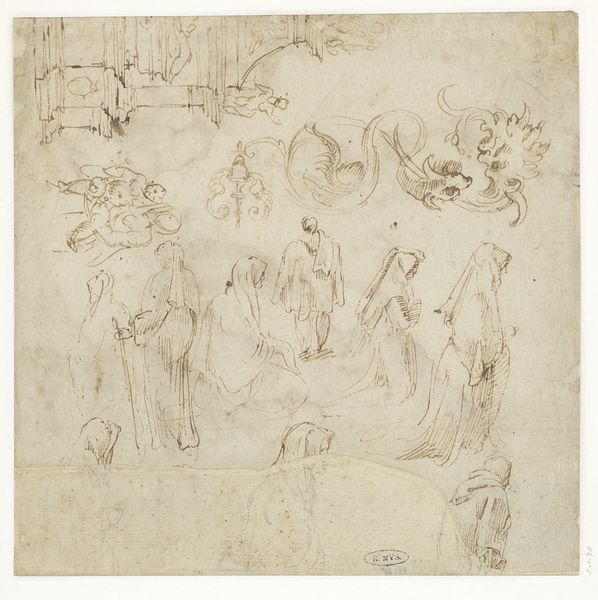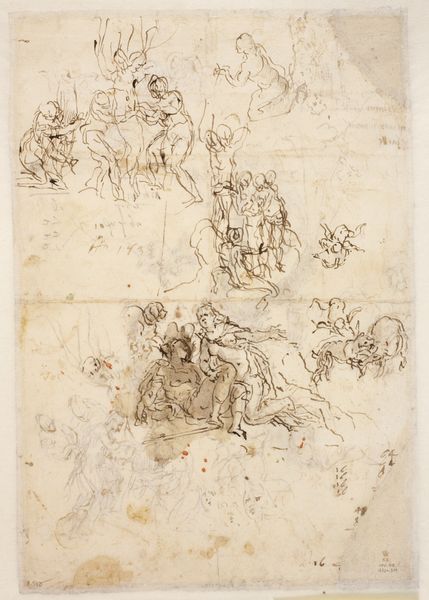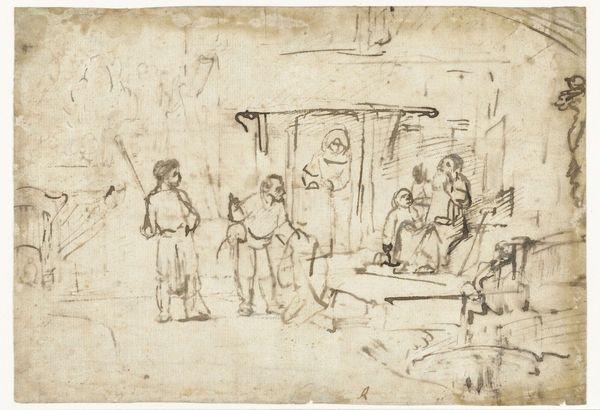
drawing, ink
#
drawing
#
baroque
#
ink painting
#
figuration
#
ink
#
genre-painting
Dimensions: 2 3/4 x 2 5/8 in. (6.99 x 6.67 cm) (sheet, irregular)14 1/2 x 11 1/2 in. (36.83 x 29.21 cm) (outer frame)
Copyright: Public Domain
Curator: This drawing, entitled "Soap or Soup Makers", is attributed to Stefano della Bella, dating back to the 17th century. It is currently part of the collection at the Minneapolis Institute of Art. What are your initial thoughts? Editor: It has a stark rawness about it. The immediacy of the medium, ink on paper, captures scenes of labor. I find myself wondering about the social position of those depicted making, quite possibly, soup for public sustenance or soap. Curator: Right, the simplicity of ink sketches here beautifully captures everyday life during the Baroque era. Considering Bella's context, his usual depictions of noble figures, this foray into the working class invites us to think about artistic patronage and representation of laborers during this period. The question of labor and how the fruits of that labor benefited society should not be ignored. Editor: Agreed, and how often are scenes like these ever represented, let alone valued enough to find a place in a collection such as this one? Soap making in particular conjures a sense of domestic production, the history of which is intertwined with the historical roles of gender and female labour. This scene offers space for more marginalised groups within broader baroque artistic and social spheres. Curator: We can consider that Bella may have found commercial workshops engaging with processes similar to that we have in view. Indeed, we should recall the labor that underlies processes that facilitate society's cleanliness; one can go beyond mere aesthetics by noting the materials like ash, tallow, and soda underlying the creation of soap that ultimately shapes practices of public health. Editor: Absolutely. Even within the broader narratives of health, hygiene, and labor during the era, the drawings here become poignant markers to a conversation that questions modes of societal organisation. The production methods themselves - like the mixing in large quantities- echo contemporary debates around the intersectional narratives related to domesticity, sanitation and sustenance for those struggling with economic inequality. Curator: Thinking about these fluid renderings on a relatively unassuming piece of paper, and our ability to be transported across the expanse of time opens pathways to reconsider those everyday contributions now immortalized within this sketch. Editor: A fascinating reflection, indeed; art always has the power to highlight otherwise overlooked components of historical narratives.
Comments
No comments
Be the first to comment and join the conversation on the ultimate creative platform.
